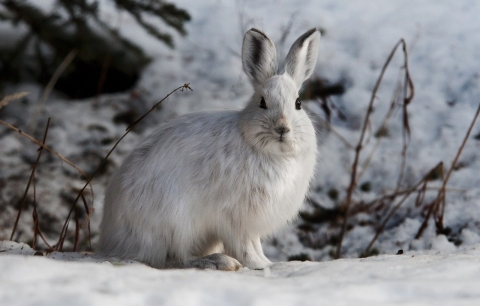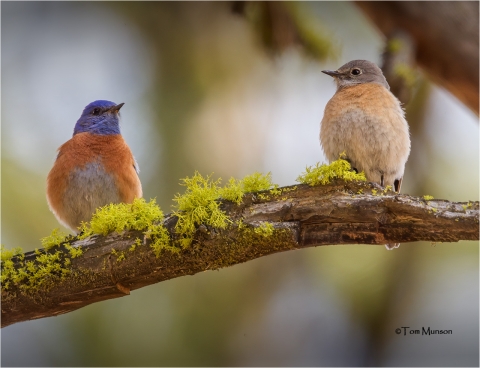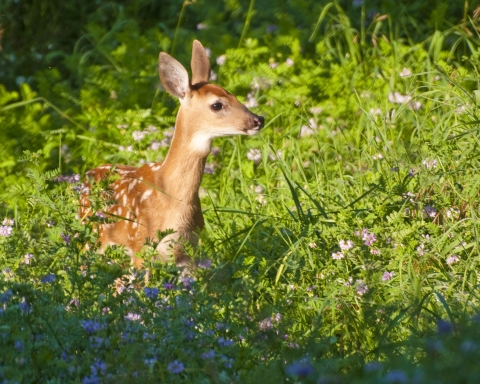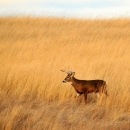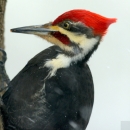Seasons of Wildlife
Fall
With nesting season finished, many songbirds migrate south; blackbirds gather in flocks. Raptors that may be sighted include red-tailed hawk, osprey, kestrel, bald eagle and northern goshawk. Bayley and McDowell Lakes along with smaller ponds host groups of waterfowl on their journey south. Fall is a season of color with golden aspens and larch on hillsides and cottonwoods and willows along rivers. Berry and fruit producing bushes and trees draw birds and mammals to feed on them. We get our first snow on the ridge behind Refuge headquarters the end of October or beginning of November. Deer start the rut.
Winter
Mammals like white-tailed and mule deer, elk, moose, coyote, bobcat, cougar, otter, snowshoe hare and weasel use the Refuge during winter months. Following their tracks in the snow can lead to bedding areas or hunting grounds. Bald eagles are often seen perched in the cottonwood tree behind Refuge headquarters along with northern shrike. Finches feed in noisy flocks that are easy to find. Downy, hairy, pileated, and northern flickers are common and can be observed year around. Black-backed, three-toed and white-headed woodpeckers are less common.
Spring
Spring means migratory birds return to the Refuge. Male red-winged blackbirds arrive so early that at least one more snowfall covers the ground but quickly melts off. Some of the first arrivals are Say's phoebe and western bluebird followed by tree swallows. Chipmunks and Columbia ground squirrels emerge from hibernation. Turtles line up on logs in our lakes and ponds. Buttercups are the first flowers to bloom followed by white trillium a month later. Wilson's snipe winnow; ruffed grouse drum, great horned owls and tree frogs call - all courtship activities. Yellow-rumped warblers are the first warbler species to arrive followed by many more. Three species of hummingbirds nest here - black-chinned, calliope and rufous. Bald eagle young hatch and ticks emerge.
Summer
White-tailed deer fawns are born along with elk and moose calves. Canada geese are busy with goslings and songbirds are occupied with nests and young. Willow flycatcher, eastern kingbird and western wood-pewee are all very vocal around Refuge headquarters. You might catch a glimpse of the bright colors on a Bullock's oriole, Lazuli bunting or western tanager. Look for colorful wildflowers and the numerous butterflies that visit them. Insect life is abundant and provides nourishment for young birds. Black bear, elk and moose sightings are most common this season - females with young or solitary males.
Featured Species
Regardless of the season, opportunities abound to view a variety of wildlife and plants on the refuge.

